Bringing Biochar Back
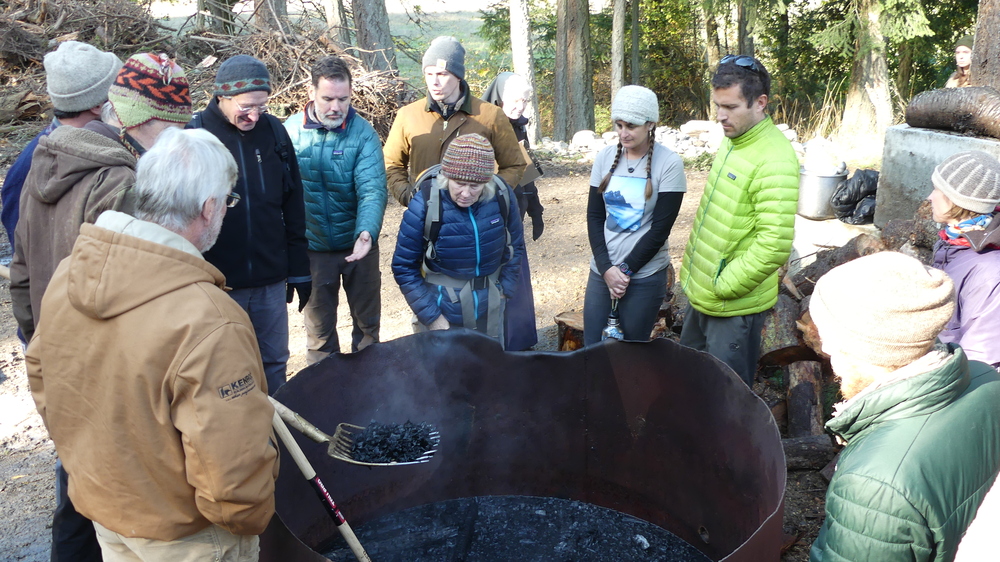
Biochar is a form of charcoal sometimes used as a soil amendment in agriculture. But that’s really only half the story.
It’s produced when organic waste material, such as forest slash, is combusted in the presence of limited oxygen. Though often described as a soil amendment, in Pacific Northwest forests it might be better thought of as a standard component of soil ― that is now missing or depleted from many forests in the Pacific Northwest.
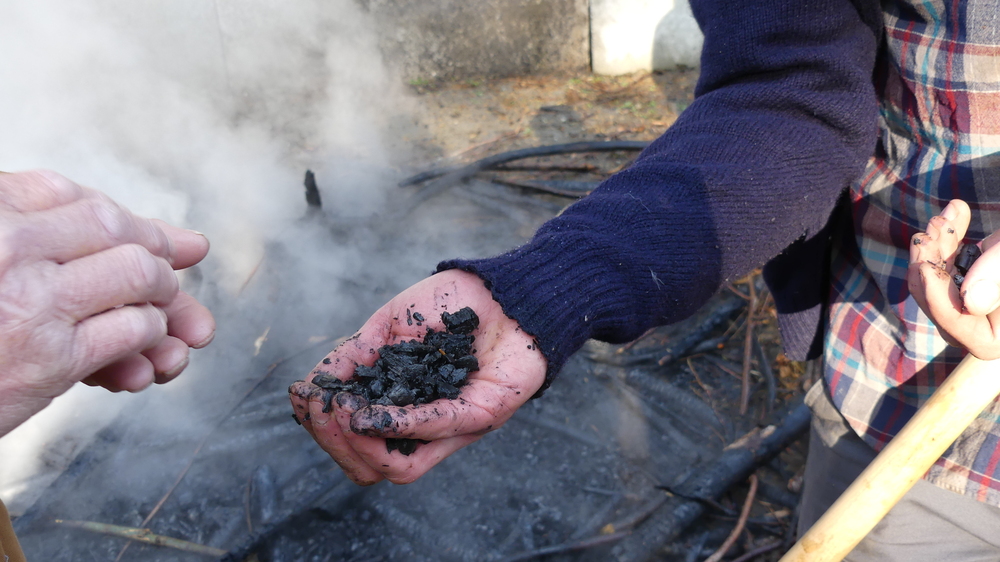
Although we may associate fires and fire-adapted landscapes with the eastern Cascades, we know from oral and written history, dendrochronology, and sediment cores that forests west of the Cascades were also historically subject to both anthropogenic and natural fires. In the San Juan Islands and elsewhere, Coast Salish peoples used fire strategically to cultivate hunting and gathering grounds.
But for the past 150 years, since the arrival of Euro-Americans, fire has been largely suppressed from these landscapes. Fire suppression has had a number of negative consequences ― congested, unhealthy forests chief among them ― including the sometimes overlooked side-effect of very little new biochar being added to forest soils.
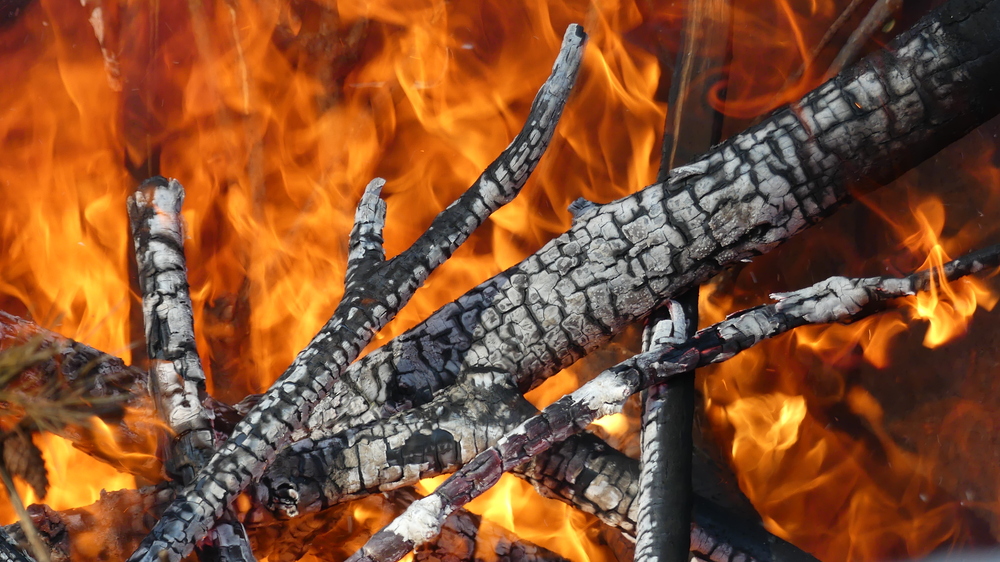
When Biochar Goes Missing
Biochar is full of micropores ― imagine millions upon millions of tiny pockets ― that give it an immense amount of surface area in very little three-dimensional space. Incredibly, one tablespoon of biochar has the same surface area as a football field. This unique structure makes for a fantastic playground for microorganisms, which feed on organic matter lodged in the micropores. Those same microorganisms are critical for plant growth. Biochar’s structure also gives it enormous water-holding and nutrient storage capacity ― both equally important for soil health. And if you need more convincing that biochar is just incredible, it also provides long-term carbon storage. Biochar has a carbon half-life of anywhere between 350-2000 years, depending on environment. (In comparison, raw wood has a carbon half-life of about 7-10 years in the Pacific Northwest.)
Since forests haven’t been burning in the same way or at the same rate as they were two centuries ago, their soils haven’t been taking up new charcoal on a regular basis. Why is this a problem? Well, the physical and chemical properties of biochar make it an incredible soil amendment for about a century after it’s formed. If new biochar isn’t added to soil during that time, the soil will become less healthy. Since soils are the foundation of our forests, unhealthy soils make for unhealthy forests.
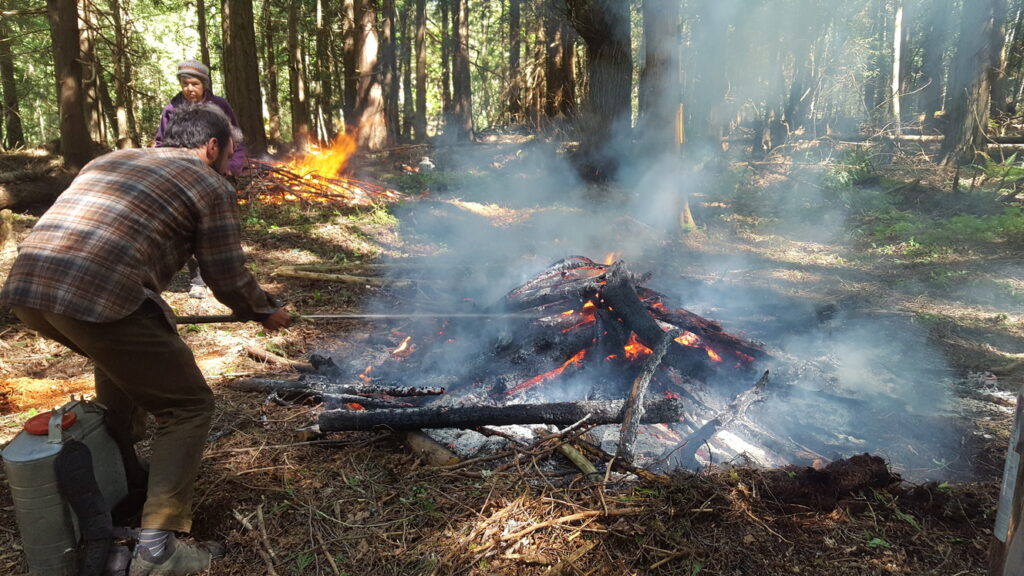
When life gives you lemons, make sooty, carbon-rich lemonade
Those stewarding dry, overstocked forests in the rainshadow of the Olympic range are often challenged with the dual tasks of managing fire risk while improving forest health. Using forest slash from thinning to make biochar can feed two birds with one scone.
Removing low-value suppressed trees (known as woody biomass or slash) is a critical step to improving individual tree growth, enhancing wildlife habitat, and reducing wildfire risk. But often the down, dying and dead trees targeted for removal are not big enough to be sawlogs, and transporting the material off the islands to a pulp mill costs more than the logs are worth. So what to do with the remainder of the woody debris? Burning it in piles kills biological activity at the site of the burn and off-gasses the majority of the carbon dioxide. Spreading the slash across the forest floor can be effective in some places, but only where fire is less of a risk. This is a woody biomass conundrum for many forest owners in rural communities.
Depending on the situation, making biochar may be the answer. Converting forest slash to biochar and mixing it into a forest’s soil is a surefire way to improve soil health while storing carbon and reducing fire risk. In some cases, selling biochar made from forest slash to agricultural buyers may present a viable commercial opportunity for forest owners hoping to recoup the cost of a thinning.

Dig deeper into biochar
Biochar is a fascinating material that’s essential to cultivating healthy forest soil. Kai Hoffman-Krull, Forest Health Manager at San Juan Conservation District, biochar expert, and founder of Restore Char, is part of the effort to launch biochar further into the forest stewardship mainstream. In partnership with Northwest Natural Resource Group, Kai has taught dozens of workshops and compiled research on biochar production, its role in soil health, and the potential for biochar markets in the Pacific Northwest.
Below we’ve gathered a list of biochar-related resources for the interested reader. Many of these resources are marketed at forest owners in the San Juan Islands but include biochar and woody biomass information that’s applicable to forest owners elsewhere. As always when working with fire, proceed with caution and rigorously observe good safety practices.
General Information
- PNW Biochar Atlas – This website contains resources for farmers, gardeners, and other end-users on the potential benefits of biochars, as well as resources for biochar producers and case studies from biochar early adopters.
- Biochar Production for Forestry, Farms, and Community – An overview of biochar as solution for agricultural soil fertility and greenhouse gas accumulation with case studies from San Juan County.
Analysis
- Biochar Market Analysis for San Juan County and the Pacific Northwest – This study examines the state of the biochar industry in San Juan County and the greater Pacific Northwest to understand if biochar is a growing market, and what potential exists for expansion.
- SJC Woody Biomass Assessment – A supply and demand assessment of woody biomass in the San Juan Islands.
How-to Tools & Methods
- Recording of Workshop: Biochar Production – This is a recording of a lecture led by Kai Hoffman-Krull at an NNRG workshop. Kai discusses the basics of biochar’s properties, and demonstrates how to set up a conservation burn pile.
- Woody Biomass Production Methods – An overview of different ways forest landowners can use and manufacture woody biomass in their woodlands.
- How to Measure Woody Biomass in Your Forest – This guidebook provides landowners with a practical inventory system for estimating the volume of timber and woody biomass in their forest. By using these guidelines, landowners can more easily collect information to inform their forest management decisions.
- Woody Biomass Calculator – This calculator tool allows forest owners to convert basic tree measurements and forest data into estimates of timber and biomass volumes.
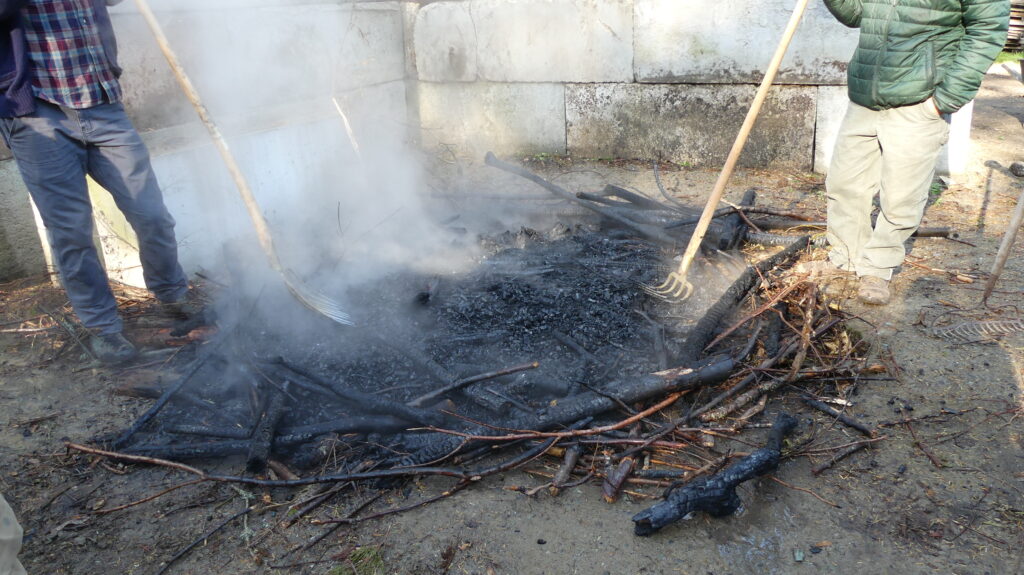

Leave a Reply